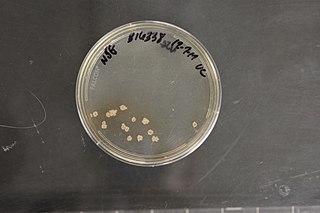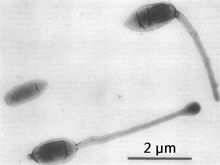The Aurantimonadaceae are a small family of marine bacteria.
Rubrobacter is a genus of Actinomycetota. It is radiotolerant and may rival Deinococcus radiodurans in this regard.
Sphingobacteriaceae is a family of environmental bacteria.
Rhodopseudomonas is a genus of bacteria from the family Nitrobacteraceae.
The Jiangellaceae are the only family of the order Jiangellales, which is a part of the phylum Actinomycetota.

The Glycomycetaceae are a family of bacteria.
The Selenomonadales are an order of bacteria within the class Negativicutes; unlike most other members of Bacillota, they are Gram-negative. The phylogeny of this order was initially determined by 16S rRNA comparisons. More recently, molecular markers in the form of conserved signature indels (CSIs) have been found specific for all Selenomonadales species. On the basis of these markers, the Selenomonadales are inclusive of two distinct families, and are no longer the sole order within the Negativicutes. Several CSIs have also been found specific for both families, Sporomusaceae and Selenomonadceae. Samples of bacterial strains within this order have been isolated from the root canals of healthy human teeth.
Erythrobacteraceae is a bacterium family in the order of Sphingomonadales.
The Silvanigrellaceae are the only family of the order Silvanigrellales, of the class Oligoflexia, of the phylum Pseudomonadota. This family currently harbors the two genera Silvanigrella and Fluviispira
Kaistiaceae is a family of Alphaproteobacteria.
Pleomorphomonadaceae is a family of Alphaproteobacteria.
Amorphaceae is a family of Alphaproteobacteria.
Methylorubrum is a genus of bacteria from the family Methylobacteriaceae.
Reyranella is a genus of bacteria from the order Rhodospirillales.
Jatrophihabitans is a genus of Actinomycetota.
The Antricoccus suffuscus is a species of bacteria.
The Rhodothermales are an order of bacteria.
Balneolales is an order of bacteria.
The Ignavibacteriales are an order of obligately anaerobic, non-photosynthetic bacteria that are closely related to the green sulfur bacteria.
The Holophagae is a class of Acidobacteriota.

